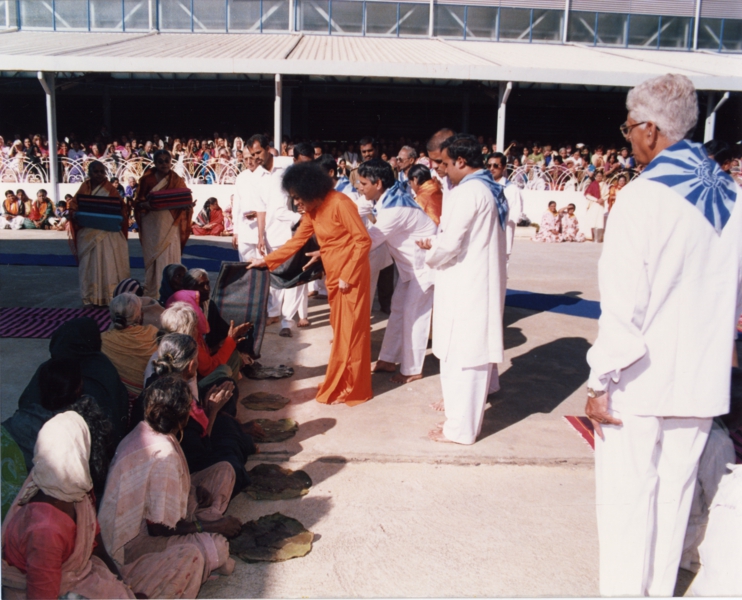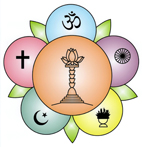
You may not get a chance to partake in some gigantic scheme of service through which millions may be benefitted; you can lift a lame lamb over a stile, or lead a blind child across a busy road. That too is an act of worship. Seva is more fruitful than japa, dhyana, yajna and yaga, usually recommended for spiritual aspirants. For, Seva serves two purposes: the extinction of the ego, and the attainment of ananda (bliss). When someone sitting near you is sunk in sorrow; can you be happy? No. A baby nearby might be weeping pathetically, and your eyes are full of tears in sympathy. Why? There is an unseen bond between the two. Man alone has this quality of sympathy; he alone can be happy when others are happy, and miserable when others are miserable. That is why he is the paragon of creation, the acme of animal advancement. Man alone is capable of seva; that is his special glory and unique skill. – Divine Discourse, Mar 04, 1970.
Gedanke für den Tag aus Prasanthi Nilayam vom 27. März 2023
Ihr habt vielleicht nicht die Möglichkeit, euch an einem gigantischen Dienstplan zu beteiligen, der Millionen von Menschen zugute kommt, aber ihr könnt ein lahmes Lamm über einen Pfahl heben und ein blindes Kind über eine belebte Straße führen. Auch das ist ein Akt der Anbetung. Seva ist fruchtbarer als Japa, Dhyana, Yajna und Yaga, die normalerweise für spirituelle Aspiranten empfohlen werden. Denn Seva dient zwei Zwecken: der Auslöschung des Ego und der Erlangung von Ananda (Glückseligkeit). Wenn jemand, der neben euch sitzt, in Kummer versunken ist, könnt ihr dann glücklich sein? Nein. Ein Baby in der Nähe könnte erbärmlich weinen, und eure Augen sind voller Tränen des Mitgefühls. Warum? Es gibt ein unsichtbares Band zwischen euch beiden. Nur der Mensch hat diese Eigenschaft des Mitgefühls; nur er kann glücklich sein, wenn andere glücklich sind, und unglücklich, wenn andere unglücklich sind. Deshalb ist er das Vorbild der Schöpfung, der Gipfel des tierischen Fortschritts. Der Mensch allein ist fähig zu Seva; das ist sein besonderer Ruhm und seine einzigartige Fähigkeit.
Sri Sathya Sai, 4. März 1970
© Sri Sathya Sai Media Centre | Sri Sathya Sai Sadhana Trust – Publications Division
